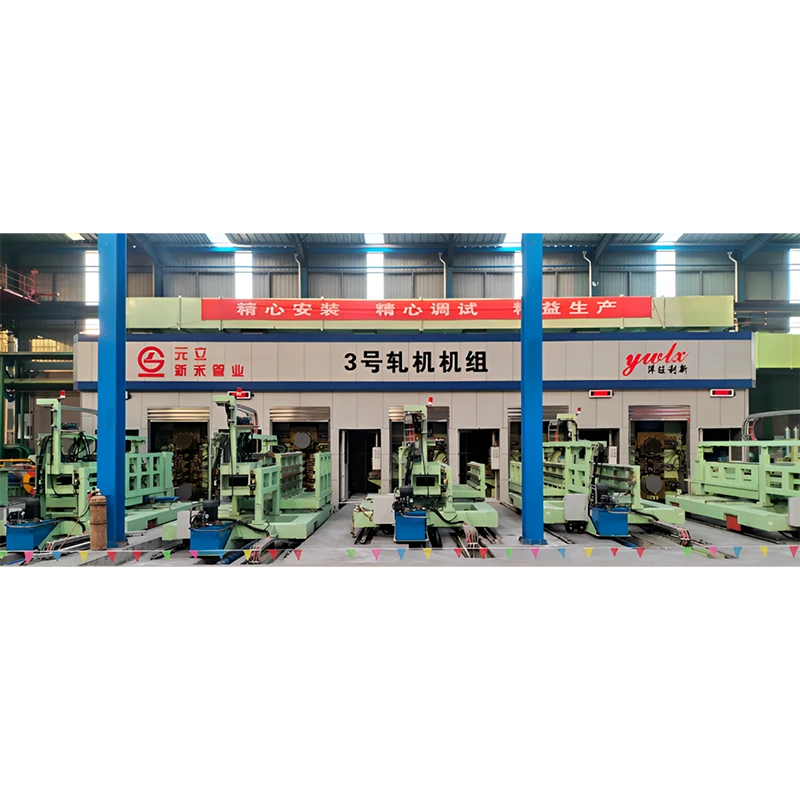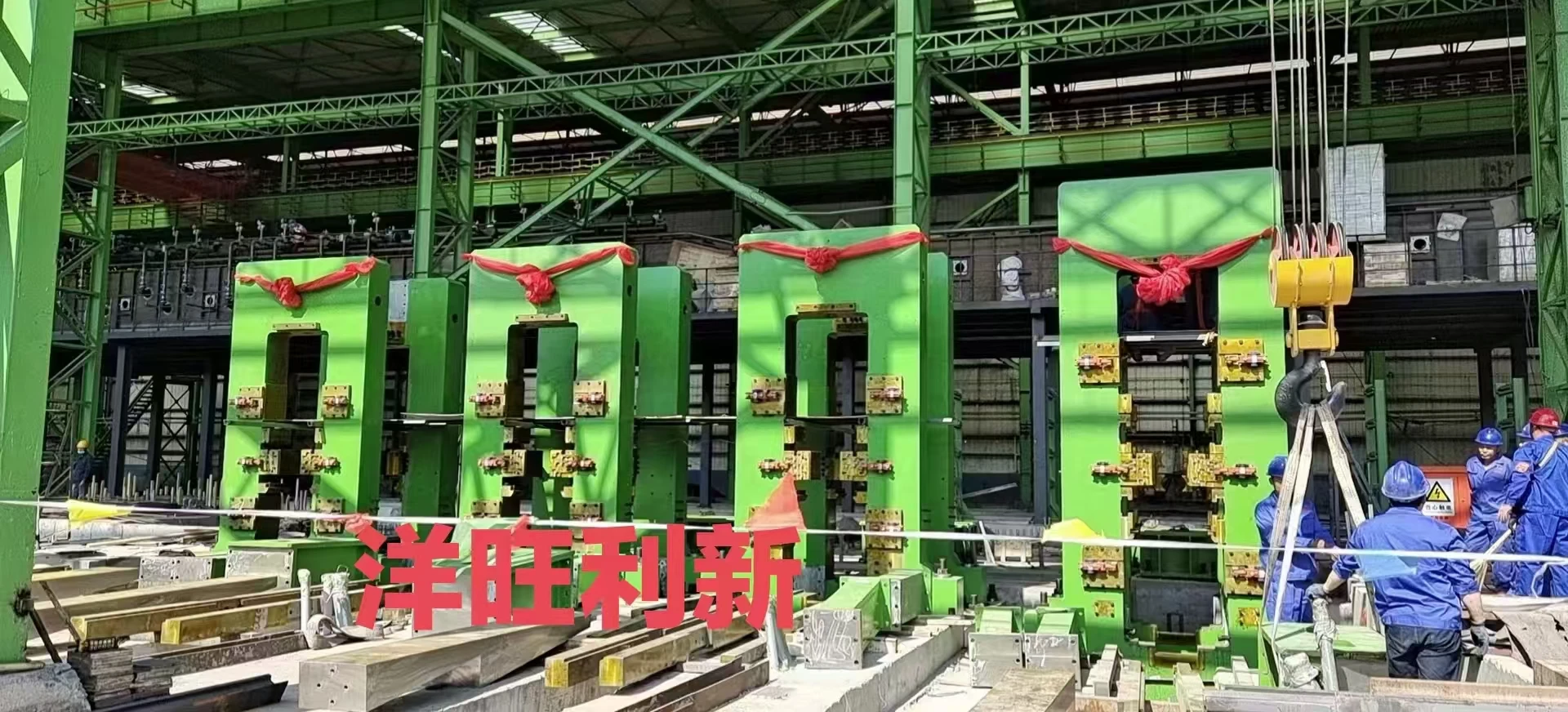
Advanced Tandem Rolling Mill Precision Control & Efficiency
- Understanding the critical role of tandem mill rolling
in modern metalworking - Technological evolution of tandem cold metal rolling mill control systems
- Data impact: How tandem rolling mill process drives efficiency and quality
- Technological advantages over conventional rolling methods
- Comparative analysis of leading tandem mill manufacturers
- Custom solutions for diverse industrial applications
- Real-world application cases and future outlook

(tandem mill rolling)
Understanding the Critical Role of Tandem Mill Rolling
Modern metal fabrication relies heavily on tandem mill rolling processes to achieve the precise thickness tolerances required by aerospace and automotive industries. This sequential material reduction method passes metal stock through multiple rolling stands arranged in succession, each applying controlled pressure to incrementally thin the material. The process enables production rates exceeding 1,800 meters per minute while maintaining strip thickness accuracy within ±0.5%. Since its industrial implementation in the 1920s, tandem cold rolling mills have evolved from purely mechanical systems to sophisticated computer-controlled installations handling advanced alloys and ultra-thin gauges below 0.1mm.
Technological Evolution of Control Systems
The implementation of tandem cold metal rolling mill control represents one of manufacturing's most significant automation advancements. Contemporary installations feature multi-layered control systems integrating mill modulus compensation with hydraulic gap control and thickness monitoring. Modern rolling stands incorporate high-response hydraulic systems capable of adjusting roll gaps within 5 milliseconds while simultaneously managing strip tension between stands through digital torque regulation. Microprocessor-controlled setups gather over 200 process parameters per second, feeding data to predictive maintenance systems that reduce unplanned downtime by 35%. These integrated controls form the technological backbone enabling the production of specialty steels with precise mechanical properties.
Data Impact: Efficiency and Quality in Focus
Contemporary tandem rolling mill processes generate immense operational datasets that drive continuous improvement. Analysis of production data reveals that optimized rolling schedules reduce energy consumption by 18-22% compared to conventional approaches. Real-time thickness monitoring using gamma-ray sensors provides measurements accurate to ±0.15 microns, while integrated surface inspection systems detect imperfections as small as 0.01mm2. During recent benchmarking trials, mills implementing AI-driven shape control systems demonstrated a 40% reduction in crown variation and a 25% decrease in flatness defects, translating directly to improved yield rates exceeding 97.5%.
Technological Superiority Explored
The unique configuration of tandem mill cold rolling installations delivers substantial advantages over single-stand reversing mills, particularly for high-volume production:
- Enhanced productivity: Continuous processing capabilities permit 300-500% higher throughput rates
- Improved material properties: Uniform microstructure refinement through sequential work hardening
- Precision consistency: Integrated gauge control maintains dimensional tolerances within ±0.2%
- Energy efficiency: Heat conservation between stands reduces power requirements by 17%
Furthermore, modern mill designs incorporate strip threading automation that eliminates manual interventions during material changeovers. This technological integration provides a 15-minute coil-to-coil transition time, maximizing equipment utilization to over 85%.
Manufacturer Capabilities Comparison
The global landscape for tandem cold rolling solutions features distinct technological approaches from industry leaders:
| Manufacturer | Max Rolling Speed | Min Gauge Capability | Unique Feature | Energy Efficiency |
|---|---|---|---|---|
| Siemens Metals | 2,000 mpm | 0.08 mm | AI-based flatness control | 0.41 kWh/t per μm reduction |
| Primetals Technologies | 1,800 mpm | 0.07 mm | Roll thermal compensation | 0.39 kWh/t per μm reduction |
| Danieli Group | 2,400 mpm | 0.05 mm | Laser weld monitoring | 0.35 kWh/t per μm reduction |
| ABB Metals | 2,200 mpm | 0.06 mm | Closed-loop spray cooling | 0.37 kWh/t per μm reduction |
Benchmarking data highlights key differences in mill design philosophies, with European manufacturers prioritizing precision capabilities while Asian producers focus on throughput maximization. All modern installations incorporate redundant automation systems ensuring operational safety during peak production conditions.
Tailoring Solutions to Industry Needs
Effective implementation of tandem cold metal rolling mill control systems requires customized configuration based on specific production requirements:
- Automotive applications: High-strength steel processing demands specialized tension controls maintaining precisely 15-25 N/mm² during final passes
- Packaging materials: Ultra-thin aluminum rolling incorporates dynamic roll bending systems controlling crown variation below 0.5%
- Electrical steels: Dedicated annealing process controls integrated directly with finishing mills preserve magnetic properties
A recent installation for specialty copper rolling successfully implemented custom work roll cooling zones maintaining temperature differentials within ±3°C while achieving 0.05mm tolerance on 650mm wide strip. These application-specific solutions demonstrate the process flexibility possible through advanced mill configuration.
Realizing the Future with Tandem Mill Cold Rolling
Leading manufacturers continue advancing tandem mill cold rolling capabilities through several emerging innovations. Machine learning algorithms now predict roll wear patterns with 94% accuracy, extending maintenance intervals by 30%. A recently commissioned installation achieved unprecedented energy efficiency by incorporating waste heat recovery that captures 27% of process thermal energy for facility heating systems. Industry projections indicate that within five years, fully automated tandem mills will achieve lights-out production capabilities, supported by Industry 4.0 technologies that reduce human intervention to periodic quality verification checks. These continuous improvements cement the process position as the dominant technology for high-volume precision metal production worldwide.

(tandem mill rolling)
FAQS on tandem mill rolling
Q: What is a tandem mill rolling process?
A: Tandem mill rolling involves multiple rolling stands arranged sequentially to reduce metal thickness in a single continuous pass. Each stand applies incremental reductions, enhancing efficiency and surface quality. This high-speed process is essential for mass production of uniform steel or aluminum strips.
Q: How does control system optimize tandem cold metal rolling mill performance?
A: Advanced control systems regulate rolling speed, tension, and thickness via sensors and automated feedback loops. They maintain precise inter-stand strip tension to prevent buckling or breaks while ensuring micron-level thickness consistency. Real-time adjustments also minimize material waste and energy consumption.
Q: What distinguishes tandem mill cold rolling from other rolling methods?
A: Tandem cold rolling employs multiple stands for consecutive thickness reduction at ambient temperatures, producing smoother surfaces and tighter tolerances than single-stand mills. Unlike hot rolling, it avoids scale formation, enhancing material hardness and strength through work hardening. Continuous processing enables higher throughput for thin, high-strength strips.
Q: Why is strip tension critical in tandem rolling mill operations?
A: Precise inter-stand tension prevents slippage, wrinkling, or tearing during high-speed material transfer. Uneven tension causes defects like gauge variations and strip breaks, disrupting production. Automated hydraulic or load-cell systems dynamically balance tension across all stands for optimal flatness and dimensional accuracy.
Q: What are key challenges in tandem cold rolling mill setup?
A: Synchronizing roll speeds and reductions across 4-7 stands requires sophisticated mathematical models to avoid instability. Rapid wear of work rolls demands frequent precision grinding, while lubrication control prevents thermal distortion. Material hardness variations also necessitate adaptive control algorithms to maintain uniformity.
-
YWLX’s 1450mm Six-Hi Reversing Mill Goes Live in BangladeshNewsNov.24,2025
-
Adjusting Roll Gap in 6Hi Reversing Cold Rolling Mill for Thin StripNewsNov.13,2025
-
Quality Control Standards for Automatic Gauge Control in Strip RollingNewsNov.13,2025
-
Effect of Skin Pass Rolling on Metal DuctilityNewsNov.13,2025
-
Key Components of a Modern TempermillNewsNov.13,2025
-
Common Wear Patterns of Work Roll in Tandem Cold Mill OperationsNewsNov.13,2025
-
Revolutionary Skin Pass Rolling Technology for Enhanced Steel QualityNewsNov.04,2025










